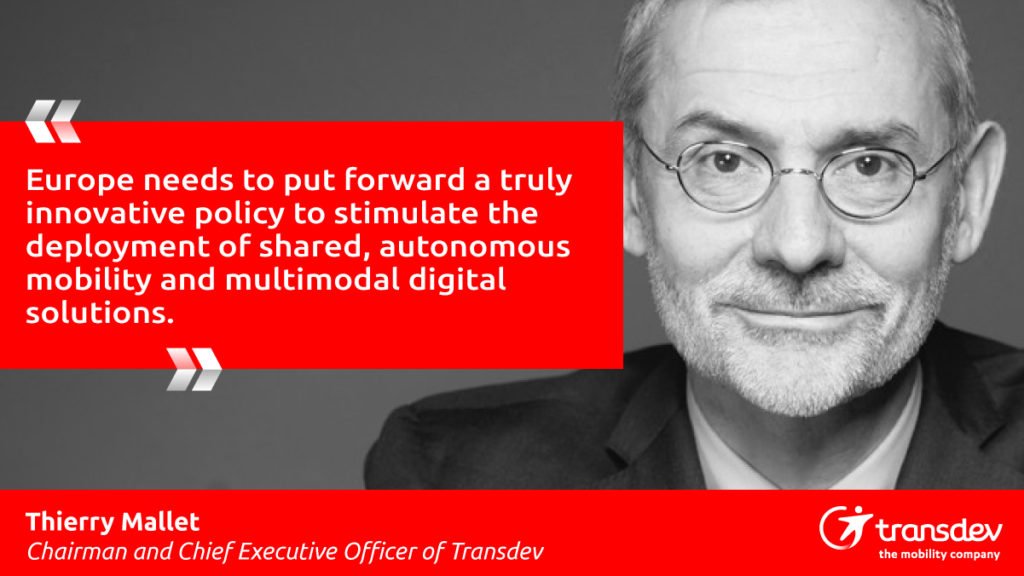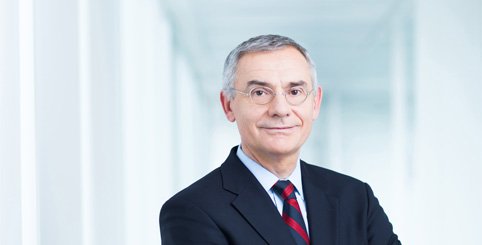On 9 December, the European Commission set out its Sustainable and Smart Mobility Strategy as a roadmap for action over the next four years.
While the strategy does acknowledge the crucial importance of daily mobility services, the objectives set out will need to be heavily reinforced by and embedded into future legislation, with particular regard to public transportation.
As the number one emitter of greenhouse gases in Europe (30% of emissions), the transportation sector needs to undergo a radical transformation if we hope to meet the targets of the European Green Deal – a 90% reduction in transportation-related GHG emissions by 2050. There is no guarantee of this without a significant redirection of EU funds towards daily mobility and a modal shift toward the use of public transportation.

The public transportation sector is reliant on strong European commitment
Public transportation in EU member states has been hit hard by this unprecedented crisis. Remember that last March, in the space of just a few weeks, we lost around 90% of our passengers on the continent, whereas operators maintained between 70 and 100% of their normal service, at the same time having to absorb additional sanitary costs and a reduction in passenger revenues and mobility payments. This scissor effect is now jeopardizing the essential role of public transport in the ecological transition.
Yet public transportation does have a vital role to play here, particularly in reducing transportation emissions, traffic congestion and road accidents in urban areas, as well as being an inexpensive and inclusive option. And all the more so given how investment in public transportation has a multiplier effect for the local economy exceeding five times the initial investment!
This positive spin-off should affirm the role of public transportation as the backbone of sustainable and smart mobility solutions. Through its EU Strategy for Sustainable and Smart Mobility, the European Commission has stated its intention to increase passenger numbers on public transportation and to expand public transportation services in outlying and rural areas, and accordingly must commit to tangible action to deliver on the challenge.
The European Green Deal is reliant on ambitious measures for daily mobility and a modal shift
If we want to develop a sufficiently extensive and attractive range of public transport services, the budget allocated to urban mobility by the European Regional Development Fund, €16.3 billion for the period 2014-2020, must be significantly increased. It is also vitally important that at least 20% of EIM subsidies are invested in everyday mobility. These challenges must be addressed in future legislation – notably in the New Urban Mobility Package expected for 2021, dedicated to EU support for urban mobility – in order to lay down concrete measures for the development of sustainable and smart mobility.
Irrespective of funding, a modal shift will never be achieved without tools for rationalizing private car use, in particular pollution charging schemes or the taxation of GHG-emitting modes of transportation. The “polluter pays” principle, as addressed in the Commission’s strategy, will also need to form part of the EU’s arsenal if it is to have any real impact. Indeed, while the deployment of alternatives to the car is necessary to limit its use, history tells us that without major curbs on cars – even electric cars – their modal share will not decrease far enough to achieve European targets for the reduction of greenhouse gas (GHG) emissions.
Europe also needs to spearhead the public transportation energy transition strategy, with financial support mechanisms intended for authorities and operators to invest in zero-emission buses and coaches (electric and hydrogen-powered) as well as low-emission vehicles using biogas or biofuels. There needs to be real technological neutrality for public transport in order to allow the unhindered development of sustainable solutions to pave the way for the modal shift.
Rail also has a key role to play in lowering the carbon intensity of transportation. The Commission’s aim here is clear: in 2030, it wants to double high-speed rail traffic across the whole of Europe. And yet the key to accelerating the modal shift could well be found in regional and suburban rail travel. 90% of rail users are passengers on vital link services between urban centers and their periphery. This represents ten times as many passengers than on long-distance rail transport in Europe. It is high time that European efforts were focused on these daily routes. To achieve this, the European Union needs to guarantee fair and regulated competition and a targeted redirection of funds for investment in the networks (particularly the region’s feeder lines) for the benefit of users and quality of service.
Lastly, Europe must put forward a truly innovative policy to stimulate the deployment of shared, autonomous mobility and multimodal digital solutions. The European Transport Commissioner Adina-Ioana Vălean herself has asserted that “Digital technologies have the potential to revolutionize our modes of transportation, making our mobility smarter, more efficient and also more ecologically-friendly”. By opening up its full potential in public transportation, digitalization will serve the sustainable and inclusive development of our regions.
This European strategy is a first step towards sustainable mobility. Yet if the objectives of the European Green Deal are to be met, this calls for a major refocus of European action in favor of public transport, through dedicated funding, alongside an appropriate innovation policy. The years ahead will see the European Commission making a good many legislative changes and proposals for transport. This is a real opportunity that must be seized if daily mobility and a modal shift are to be at the forefront of a decarbonized Europe.

